
Anybody acquainted with European historical past could have heard of the Saxons. Initially a Germanic tribe from the North Coastline of the Netherlands, over the centuries they unfold throughout Europe like wildfire. As a consequence of their illiterate nature, tracing their journey via Europe isn’t at all times simple. A lot of what we find out about them comes from modern authors writing concerning the numerous troubles the Saxons brought about, in addition to some archaeological proof they left behind. What we do find out about them is fascinating. A lot has been written concerning the Saxons who took England and have become Anglo-Saxons. However what of the Saxons who remained in Europe? What occurred to them?
Early Historical past of the Saxons
It’s usually claimed the primary point out of the Saxons comes from the Geographia by Ptolemy, a distinguished Roman mathematician, astronomer, astrologer, and geographer. Whether or not that is correct or not has been the subject of a lot debate. Some variations of this textual content make point out of a tribe known as the Saxones, who lived in an space north of the decrease Elbe (one in all Europe’s foremost rivers).
Different variations of the textual content describe them as Axones, which can be a misspelling of a tribe that the Roman historian Tacitus had already written about in his Germania, the Aviones. Historians can’t agree whether or not the title Saxones is the results of later scribes making an attempt to appropriate a reputation they believed had been misspelled, or whether or not the Saxons had been actually separate from the tribes described by Tacitus.
The primary undisputed point out of the Saxons dates again to 356 AD. This comes from Julian who talked about the Saxons in a speech 5 years earlier than he grew to become emperor, describing them as allies of Magnentius, who was a rival emperor primarily based in Gaul (modern-day France).
The Saxons described by the Romans had been related to raiding cities and villages via using boats. It’s potential their title comes from a sort of blade they used on these raids, the seax. Saxon raiders had been sufficient of an issue for the Romans that they had been pressured to create a army district often known as the Litus Saxonicum (Saxon shore) on each side of the English Channel.

The 9 British Saxon Shore forts talked about within the Notitia Dignitatum, circa 390-420 AD ( Public Area )
The primary point out of Saxons settling in Britain comes from round 440 AD. It’s believed Saxons first inhabited present-day northern Germany in 555 AD. That yr, Frankish King Theudebald died, and the Saxons used the following chaos to hold out an rebellion. The rebellion was short-lived, nevertheless, and was quickly squashed by Chlother I, the lifeless king’s successor.
Saxons in Italy and Provence
By the sixth century, the Saxons had been busy spreading. In 569, Saxons traveled with a Germanic individuals known as the Lombards into Italy, led by the Lombard king, Albion. They settled there and shortly started raiding the neighboring areas. In 572, they raided the southeast of Gaul, getting so far as Stabilo (modern-day Estoublon).
Dividing their forces to hold out so many raids turned out to be a mistake. The Roman Empire despatched in one in all their generals, Mummolus, to place down the Saxons at Estoublon. It was a simple win for him. The Saxons realized their lesson. Once they regrouped, they did so to signal a peace treaty with the Romans. The treaty allowed the Saxons and their households to settle in Austrasia, within the north-east of the Merovingian Kingdom of the Franks.
This peace didn’t final for lengthy. In 573, the Saxons break up into two teams and headed to Provence. One group traveled through Good, the opposite through Embrun with the teams assembly up at Avignon in southeastern France. Upon arriving in Avignon, they raided the realm for all it was price, as soon as once more drawing the ire of the Romans.
Mummolus reappeared and stopped the Saxons from crossing the Rhine and reaching their final purpose, Austrasia. They had been pressured to pay compensation for what they’d taken from Avignon earlier than Mummolus would allow them to cross.
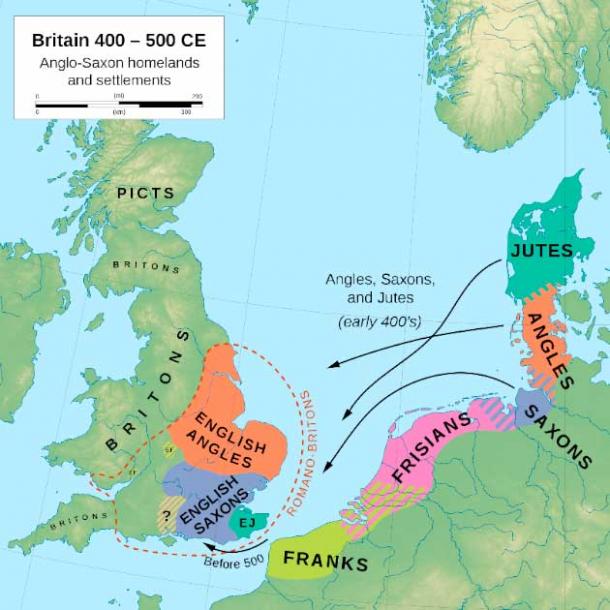
Map of Anglo-Saxon homelands, primarily based on Bede’s Ecclesiastical Historical past (Mbartelsm / CC BY SA 3.0 )
Saxons in Gaul
The Saxons had begun transferring into Gaul lengthy earlier than they’d break up up and gone into Italy. In 463 AD, a Saxon king named Eadwacer conquered Angers, a metropolis in what’s at the moment western France. This didn’t final lengthy, and he was quickly evicted by Childeric I and the Salian Franks, allies of the Romans.
It seems different Saxons settled within the space extra peacefully. In the course of the fifth century, a Saxon unit settled at Bayeux. Often known as laeti by the Romans, these Saxons had been allowed to settle there so long as they agreed to offer recruits to the Roman army. By the late fifth century, the Saxons of Bayeux had develop into topics of Clovis, the primary Frankish king to unite all of the Frankish tribes.
The Saxons of Bayeux proved themselves to be good for the realm. They acted as a standing military and had been usually known as to struggle alongside the native levy (Frankish conscripts) throughout the Merovingian army campaigns.
In 589, the Saxons fought with the Merovingians in opposition to Guntram, the King of Orleans. From 626, the Saxons had been utilized by one other Frankish king, Dagobert I, in his struggle in opposition to the Basques. As a reward for his or her repeated loyalty, one of many Saxons, Aeghyna, was made dux (duke) over the area of Vasconia.
Official paperwork from the court docket of Frankish King Charles II (often known as King Charles the Bald) present that he granted the Saxons a area known as Otlinga Saxonia within the Bessinr area of Gaul. From this level onwards, the names of varied areas of Gaul present a distinctly Saxon affect, indicating widespread Saxon settlements.
The oldest Saxon website present in France to this point is Vron, in Picardy in northern France. Archaeologists have uncovered a big cemetery with tombs from the Roman Empire till the sixth century AD. Inside these later tombs, human stays, in addition to numerous items of furnishings and artifacts, had been discovered.
These buried within the cemetery throughout the fourth and fifth centuries are bodily distinct from the our bodies of different native inhabitants discovered earlier than this era, resembling the Germanic individuals of the north. From round 375 AD onwards, the burials had been carried out in an space often known as the Saxon Shores.
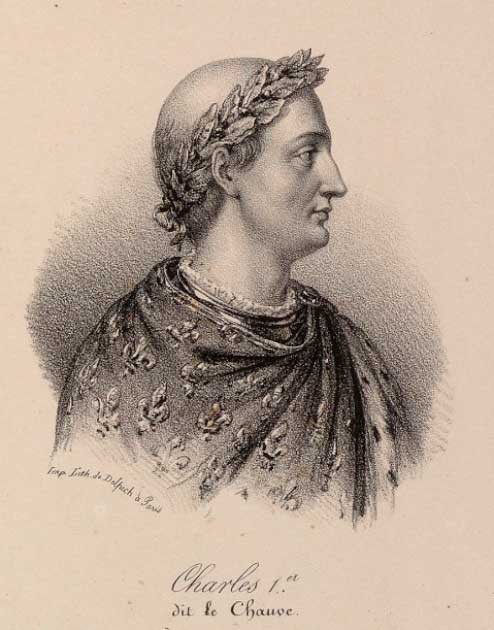
Charles II granted the Saxons a foothold in Gaul. nineteenth century lithograph of Charles the Bald ( Public Area )
Saxons in Germany
As time went on, the Saxons fought to take care of their individuality. This meant resisting changing into Christians and resisting being fully dominated by the Frankish Kingdom. This led to a recreation the place the Saxons repeatedly swore loyalty to the Franks, whereas disobeying them each probability they acquired.
In 776, the Saxons promised to transform to Christianity and vowed their loyalty to the Frankish king Charlemagne. This didn’t final for lengthy, nevertheless. Whereas Charlemagne was busy combating in Hispania in 778, the Saxons took their probability and superior alongside the Rhine to Deutz (Cologne in Germany), plundering as they went.
This grew to become considerably of a behavior of the Saxons. Each time Charlemagne was distracted by some unrest or international warfare, the Saxons would take the chance to begin plundering.
This fixed disobedience led to a collection of campaigns known as the Saxon Wars between 772 and 804. The Saxon Wars ended with the Saxons finally being defeated by Charlemagne’s extra organized forces. Defeat meant the Saxons had been forcefully baptized and transformed to Christianity in addition to fully built-in into the Frankish Empire.
It was a humiliation. Traces of the Saxon’s pagan faith, such because the Irminsul, a sacred tree or pillar, had been all destroyed. Searching for to interrupt up the Saxons, Charlemagne deported over 10,000 of them to Neustria within the west. Their then-vacant lands had been gifted to the loyal king of the Abotrites, a Slavic individuals, whom Charlemagne wished to reward.
Below Frankish rule in Germany, the as soon as proudly impartial Saxons had been decreased to tributary standing, pressured to pay tribute to their overlords. Proof factors to the Saxons being pressured to offer their Frankish rulers with troops.
The Saxons and Faith
Saxon faith and politics had been intently linked. The Saxons held annual councils, which at all times started with invocations to their pagan gods. When dukes had been elected throughout wartime, they weren’t elected however chosen by tons. Reasonably than random decision-making, it’s believed the Saxons used tons as a result of they trusted the gods to determine who ought to lead their troops.
In addition they used numerous sacred rituals and objects. Most well-known are their holy pillars, known as Irminsul. The Saxons believed these pillars linked heaven and earth and supplied a path to heaven. When Charlemagne determined to punish the Saxons on the finish of the Saxons Wars, he did so by chopping down their prized Irminsul outdoors the Saxon Eresburg stronghold.

Fresco on the Gothic Aachen Rathaus, Inside of Coronation Corridor. Titled: “Demolition of Irminsul, the previous Saxon nice pillar” (HOWI / CC BY SA 3.0 )
As pagans, the Saxons worshiped numerous previous Germanic gods comparable to Woden, Frigg, Tiw, and Thunor. Their worship included numerous traditions and festivals. For instance, in February, the Saxons supplied muffins to the gods and within the autumn they carried out a harvest pageant known as Halegmonath.
As talked about above, finally the Saxons had been forcefully transformed to Christianity by Charlemagne, however some Saxons had already transformed earlier than this. The method started within the 630s when a Frankish Benedictine monk named Birinus grew to become the “apostle to the West Saxons” of England and transformed the dominion of Wessex and its king, Cynegils.
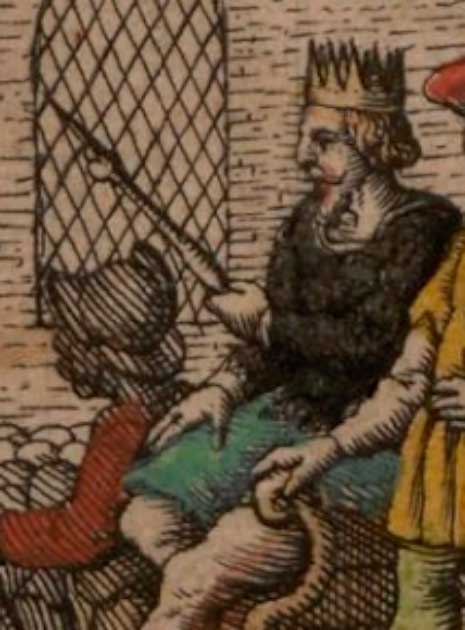
Cynegils of Wessex was one of many first Saxon kings to transform to Christianity. Portrait from John Velocity’s Saxon Heptarchy map, 1611 ( Public Area )
The South Saxons had been subsequent after their king, Aethelwalh of Sussex, was transformed by the Mercian king Wulfhere. As soon as Aethelwalh was transformed, he allowed the Bishop of York, Wilfrid to transform his individuals.
Essentially the most resistant Anglo-Saxons had been the East Saxons. They had been extra devoutly pagan than their southern and western cousins, and the japanese territory had pagan websites to spare. Regardless of this, their king, Saeberht, really transformed comparatively early on. He established a diocese in London, however it was short-lived, and its first bishop, Mellitus, was expelled by Saeberht’s heirs. The East Saxons had been lastly transformed within the 650s and 660s.
The conversion of the Saxons in Europe got here after that of the Anglo-Saxons. Their conversion was carried out within the late seventh and early eighth centuries by missionaries who got here from England. Being a missionary, it seems, was a harmful job. Two of the primary English missionaries to try changing the continental Saxons had been Hewald the White and Hewald the Black. They had been shortly martyred by Saxon villagers.
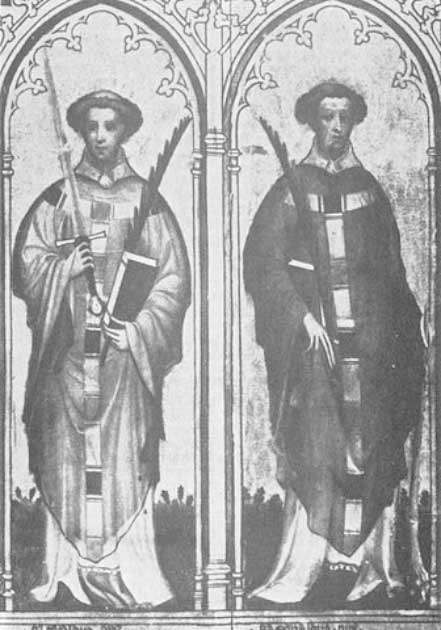
The Two Hewalds on the Church of Saint Kunibert, Cologne, circa 1400 ( Public Area )
Low-class Saxon villagers put up the most important struggle in opposition to conversion. They related Christianity with the ruling class, who they hated. All through the eighth century, Saxon villagers refused to transform and would usually assault missionaries. In response, the missionaries sought the safety of the noble class, who the villagers hated.
A basic instance is Saint Lebuin, an English missionary, who preached to the Saxons of Europe between 745 and 770. He spent most of this time within the Netherlands and constructed a church there. He was a preferred determine among the many native nobles however unpopular among the many peasants.
He was attacked by an indignant mob on the annual council at Marklo one yr, and the nobles had been pressured to return to his rescue. Interventions like this led to severe tensions between the noblemen, who had been sympathetic to the Christians, and the lower-class pagan Saxons, who noticed their faith as a part of their Saxon identification.
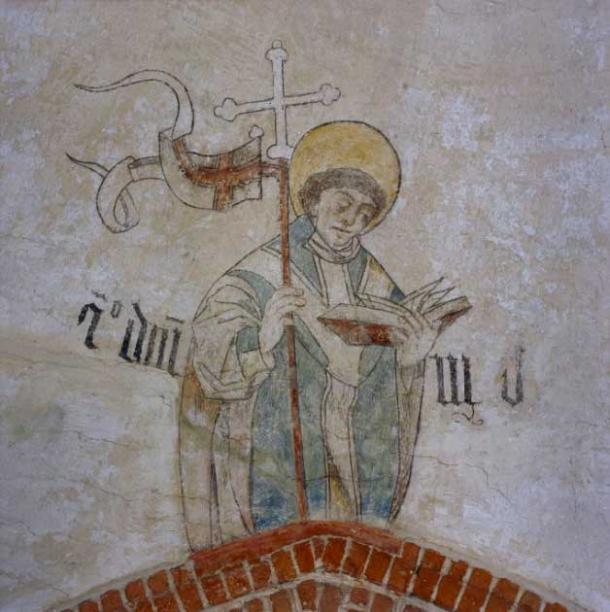
Saint Lebuin, the missionary whose work provoked the native Saxon pagans (Rijksdienst voor het Cultureel Erfgoed / CC BY SA 4.0 )
Issues got here to a head with the tip of the above-mentioned Saxon Wars. Charlemagne’s foremost purpose had been to transform the Saxons and convey them into the Frankish Empire. When the warfare ended, most of the high-class Saxon nobles fortunately transformed, keen to maintain Charlemagne pleased and win his favor. The decrease class was a unique story; they needed to be forcefully baptized. These pressured baptisms, and the actual fact they now needed to pay tithes to their Frankish rulers, solely alienated the decrease order additional.
Charlemagne’s successor, Louis the Pious , selected to make use of a unique tactic. He stopped the pressured baptisms and decreased the tithes. This happy the Saxons, and lots of of them grew to become his loyal topics.
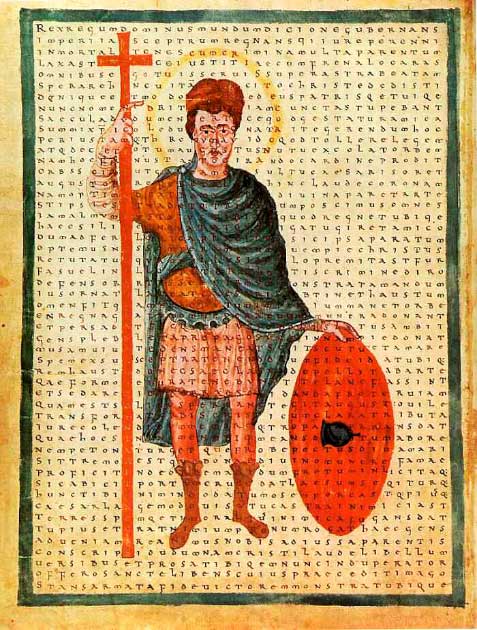
Louis the Pious, modern depiction from 826 as a far Christi (soldier of Christ), with a poem of Rabanus Maurus overlaid ( Public Area )
The pagan Saxons put up one final struggle between 841 and 843 after the demise of Louis. The decrease courses, led by the Stellinga (freemen and freedmen who had been under nobles however larger up than the bottom class) revolted in opposition to their Saxon leaders, who had allied themselves with Louis the Pious’s son and successor emperor Lothair I. After this rebel was put down, most continental Saxons ended up lastly cooperating.
Most of the lower-class Saxons who formally transformed nonetheless practiced their previous pagan methods in secret. As late because the twelfth century, there have been stories of outbreaks of paganism throughout Europe. For a lot of Saxons, their identification was tied to the previous pagan methods. At any time when they felt marginalized or sad with their management, they had been prone to revert to paganism as a type of protest.
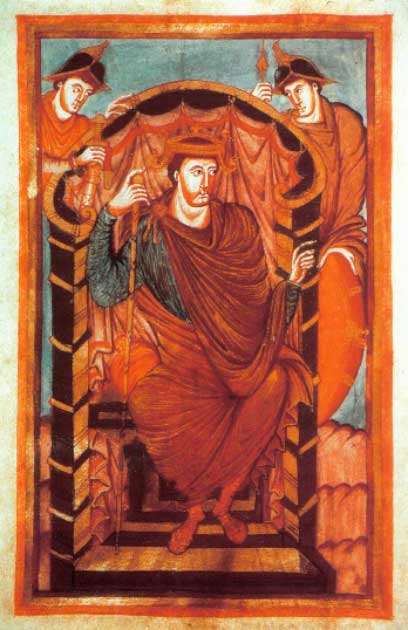
After Lothair I quashed one other Saxon rebel, most continental Saxons grew to become cooperative. ( Public Area )
Conclusion
As we speak, the Saxons are most frequently remembered for his or her conquest of England. It’s true that England at the moment can be a wholly completely different place with out the Saxons. The identical can be stated for the remainder of Europe.
Wherever the Saxons went, they’d a significant impression on these round them. Typically, this was a destructive one. The Saxons had a nasty behavior of pillaging wherever they went. However generally that presence was a constructive one. These kings who managed to win Saxon favor usually gained themselves loyal warriors as a reward.
It’s laborious to not respect the rebellious spirit of the Saxons, particularly their peasants. Even after being forcefully transformed and baptized, they continued to be a thorn within the facet of noblemen and the church for hundreds of years.
High picture: The Saxons unfold throughout Europe from the 4th century, settling almost each nook of the continent, right here portrayed clashing with Vikings. Supply: Justinas/Adobe Inventory
By Robbie Mitchell
References
Goldberg, E. 1995 . In style Revolt, Dynastic Politics, and Aristocratic Factionalism within the Early Center Ages: The Saxon Stellinga Reconsidered . The College of Chicago Press.
Halsall, G. 2008. Barbarian Migrations and the Roman West . Cambridge.
Mitchell, S. 2014. A Historical past of the Later Roman Empire . Wiley-Blackwell
Saxons. n.d. Wikipedia. Accessible at: https://en.wikipedia.org/wiki/Saxons
Violatti, C. The Saxons . World Historical past Encyclopedia. Accessible at: https://www.worldhistory.org/Saxons/